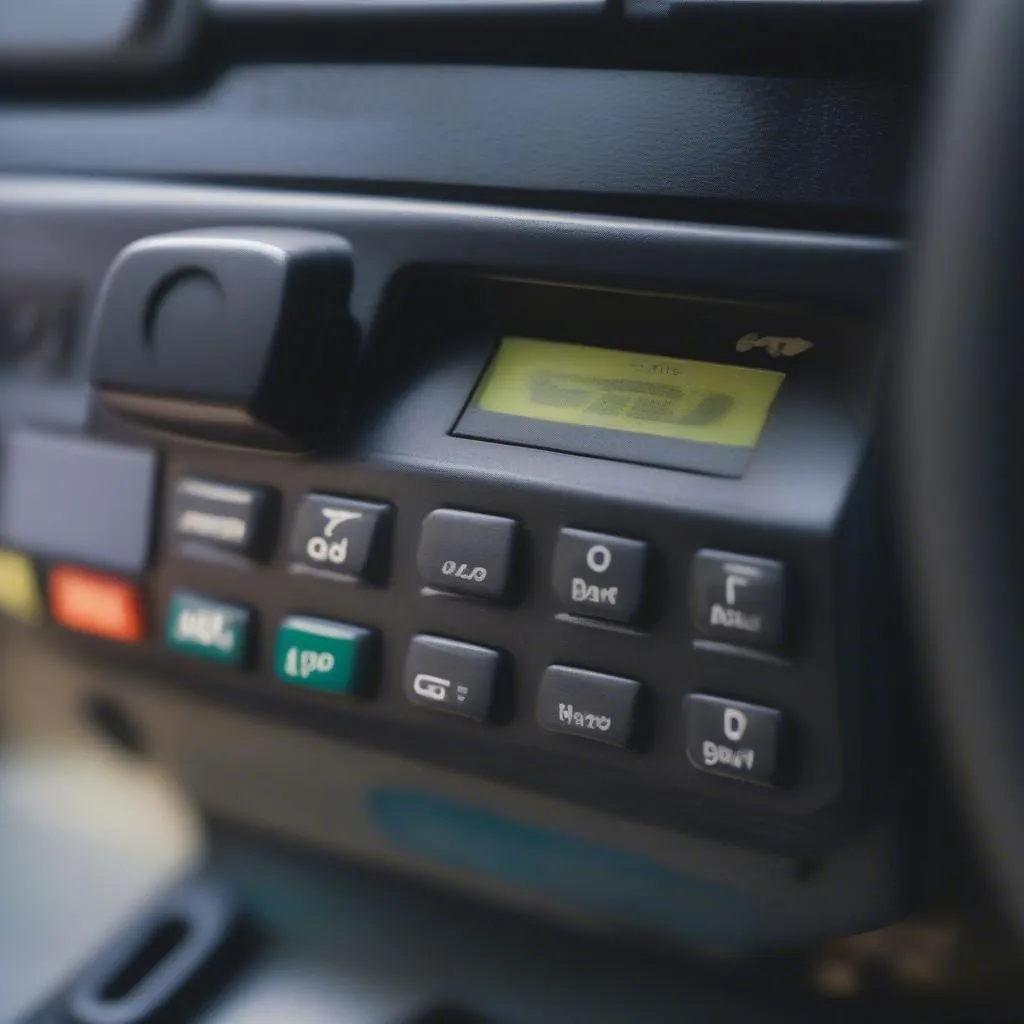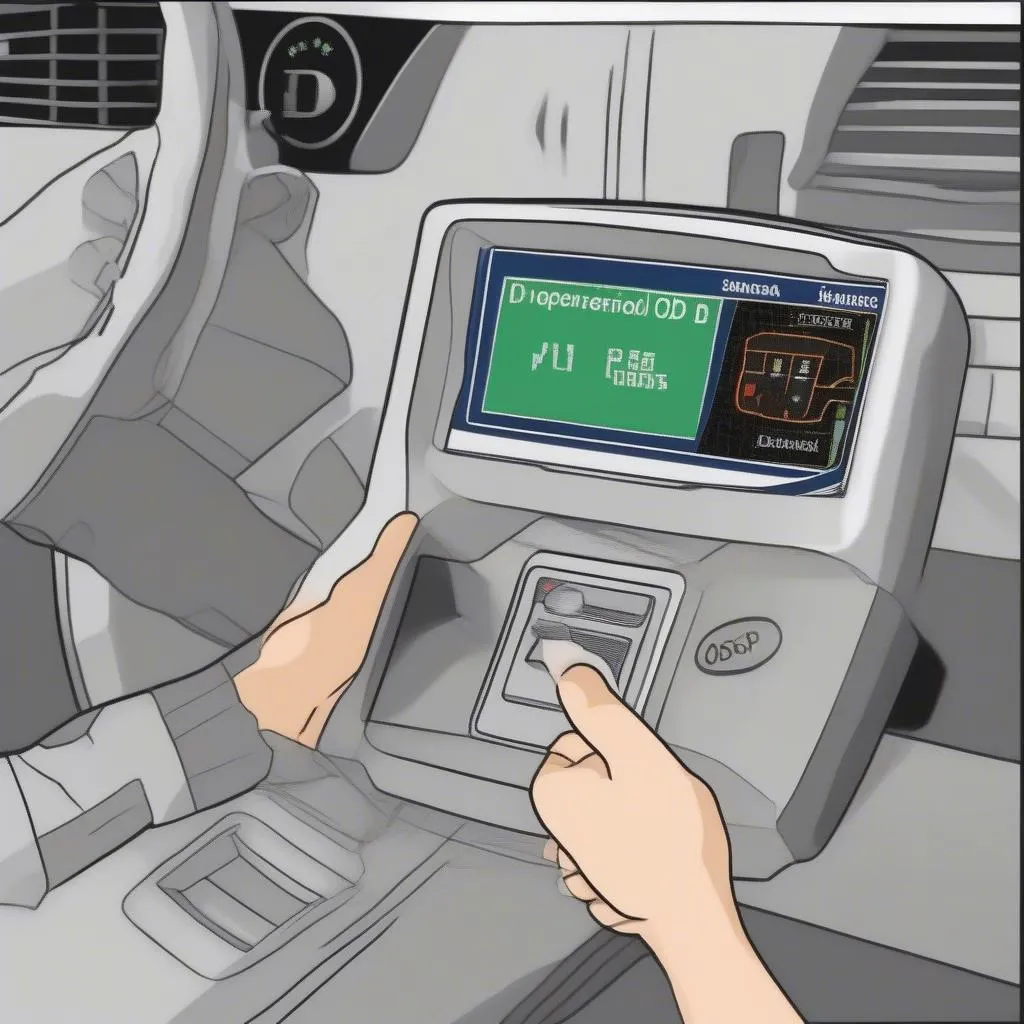Have you ever wondered what the “OBD” in your 1996 car stands for? It’s a question many car owners ask themselves, especially when they’re faced with an unexpected engine light or a strange noise coming from under the hood. Well, let’s dive into the world of 1996 Obd and unlock the secrets behind this essential diagnostic tool.
Understanding the 1996 Obd System
The term “OBD” stands for On-Board Diagnostics. It’s a standardized system that allows technicians to diagnose and monitor various vehicle components. Think of it as a built-in computer that constantly checks the health of your car’s vital systems.
In 1996, the OBD-II standard was implemented for all gasoline-powered vehicles sold in the United States. This marked a significant advancement in automotive technology, paving the way for more accurate and efficient diagnostics.
Why is the 1996 Obd System Important?
The 1996 OBD-II system is crucial for several reasons:
1. Early Warning System:
Imagine this: you’re driving down the highway and your car’s engine light suddenly flickers on. This is a signal that your car’s OBD system is detecting a potential problem.
The 1996 OBD system acts as an early warning system, alerting you to potential issues before they escalate into major problems. This can prevent costly repairs and ensure your safety on the road.
2. Emissions Control:
The 1996 OBD system also plays a critical role in emissions control. It monitors the performance of your car’s emissions system, ensuring that it’s operating within acceptable limits. This is important for protecting the environment and maintaining clean air quality.
3. Troubleshooting and Repair:
When your car’s OBD system detects a problem, it stores a diagnostic trouble code (DTC) that helps technicians identify the root cause of the issue.
Using a scanner, a technician can read the DTC and pinpoint the faulty component, enabling them to perform the necessary repairs quickly and efficiently.
What You Need to Know About 1996 Obd: FAQs
How do I find the OBD port in my 1996 car?
The OBD port is typically located under the dashboard, near the steering wheel. It’s often a 16-pin rectangular connector, labeled with “OBD” or “DLC” (Data Link Connector).
For specific model-year cars, it’s best to consult your owner’s manual or a trusted repair shop.
Can I use a generic scanner for my 1996 car?
While generic scanners can read and interpret basic DTCs, they might not be compatible with all the features of your 1996 car’s OBD system. For more comprehensive diagnostics and advanced features, you might want to consider using a brand-specific scanner.
What are some common problems with 1996 Obd systems?
Some common problems include:
- Faulty sensors: Oxygen sensors, mass airflow sensors, and other critical sensors can malfunction, causing incorrect data to be sent to the OBD system.
- Loose connections: A loose connection in the wiring harness can disrupt the flow of data, leading to inaccurate readings.
- Damaged OBD port: A damaged OBD port can prevent communication between your car and the scanner.
What are some common 1996 car models that have OBD systems?
Here are some examples:
- Chrysler Voyager: The 1996 Chrysler Voyager featured an advanced OBD system for its time.
- BMW E36: The BMW E36 3-Series was one of the first BMW models to adopt the OBD-II standard in 1996.
- Fiat Bravo: The 1996 Fiat Bravo, a popular compact car in Europe, also had an OBD system.
Dealer Scanners for European Cars
If you own a European car manufactured in 1996, such as a BMW, Audi, or Fiat, you might need a dealer-specific scanner for comprehensive diagnostics. These scanners are designed to access manufacturer-specific data and provide more detailed information about your vehicle’s systems.
You can contact a reputable dealership or a specialist in European automotive diagnostics for assistance.
Conclusion
The 1996 OBD system is a valuable tool for understanding and diagnosing your vehicle’s health. It provides early warnings, helps with emissions control, and assists with troubleshooting. By familiarizing yourself with your car’s OBD system and its functionalities, you can gain a better understanding of your vehicle and make informed decisions about its maintenance.
Let us know if you have any questions about the 1996 OBD system or need assistance with diagnostics. We can connect you with a qualified technician who can help.
Don’t forget to check out these other helpful resources:
We’re here to help! Connect with us on Whatsapp: +84767531508.
 OBD Port Location
OBD Port Location
 OBD Scanner
OBD Scanner